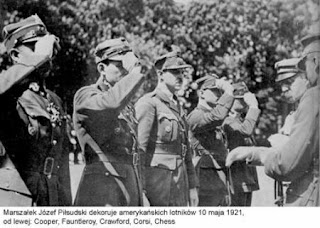Ma rating:
9/10
“303
(Polish) Squadron Battle of Britain Diary” is an amazing book written by an
Englishman Richard King. There are many fragments quoted from real diaries. Most of them come from a diary kept by a Polish ace – Miroslaw Ferić, who invited other aces to contribute to his diary. Those fragments are translated to English and by every one of them there is a note informing who wrote it.
There are also numerous fragments from a separate diary kept by John Kent – a Canadian flight commander of the 303 Squadron. Moreover there are quotes from official English military documents. The author also analyzes some data recovered after the war from official German documents. Amazing.
The main part of the book is not quoted, but written by the author. The narration is quite interesting and gripping for a book like this. The author tried to be as objective as he could be and as precise as he could be. I believe this book is the most accurate history of the 303 Squadron. To make it even better there are numerous photos taken during the Battle of Britain.
It’s VERY hard to review this book, because it’s like no other book in the world. I decided to simply show you photos of some pages from this book.
There are also numerous fragments from a separate diary kept by John Kent – a Canadian flight commander of the 303 Squadron. Moreover there are quotes from official English military documents. The author also analyzes some data recovered after the war from official German documents. Amazing.
The main part of the book is not quoted, but written by the author. The narration is quite interesting and gripping for a book like this. The author tried to be as objective as he could be and as precise as he could be. I believe this book is the most accurate history of the 303 Squadron. To make it even better there are numerous photos taken during the Battle of Britain.
It’s VERY hard to review this book, because it’s like no other book in the world. I decided to simply show you photos of some pages from this book.
(Click
the below pictures to enlarge. They should be large enough to be easily
readable. Otherwise right-click and pick “save target as” to see
them outside the Internet browser.)
(Sunday, 10 June 2012)




















































